R.H. Charles Studies on Apocryphal and Apocalyptic Texts (13 vols.)
Digital Logos Edition
Overview
The book of Enoch is considered an apocryphal book, not traditionally part of the Protestant canon. The integrity of the Apochrypha has been debated for a long time, but what are the resources available to discuss its authenticity? R.H. Charles left parochial work in 1889 to devote his life to biblical research and became one of the primary authorities of his time in matters of Jewish culture, theology, eschatology, and Apocrypha. This collection contains 13 volumes of Charles’ works, with topics such as Enoch, the twelve patriarchs, the writings of the Sons of Zadok, and the Decalogue.
For more works by R.H. Charles, check out The Apocrypha and Pseudepigrapha of the Old Testament in English and A Critical History of the Doctrine of a Future Life.
This title is included in the following collections
You can save when you purchase this product as part of a collection.
2025 Lutheran Diamond
$2,999.99$2,249.992025 Lutheran Portfolio
$4,749.99$3,562.492025 Ultimate Library
$23,999.99$17,999.99

Key Features
- Champions the value of Jewish and Christian apocryphal and apocalyptic literature
- Analyzes biblical, non-biblical, and non-canonical texts
- Enhances the study of apocryphal texts
Product Details
- Title: R.H. Charles Studies on Apocryphal and Apocalyptic Texts
- Author: R.H. Charles
- Volumes: 13
- Pages: 3,130
- Christian Group: Anglican/Episcopalian
- Resource Type: Commentaries, Sermons, Lectures
- Topic: Apocrypha, Apocalyptic Literature
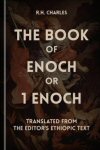
The book of Enoch, like the book of Daniel, was written partly in Aramaic and partly in Hebrew. Serious scholarship places this important pseudepigraph within the first two centuries before Christ. The translation is from Dillmann’s edition of the Ethiopic text, which was based on five manuscripts, nine uncollated Ethiopic manuscripts, and Greek and Latin fragments. This volume explains how evil came to the world with the arrival of the “fallen angels.”
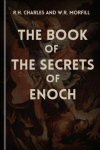
The Book of the Secrets of Enoch is a translation of the Slavonic version of a Greek original. This book was carefully and literally translated by the Slavonic scholar, W.R. Morfill. R.H. Charles provides commentary with technical notes aimed toward students.
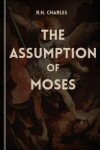
In The Assumption of Moses, R.H. Charles provides a detailed exegesis of the sixth-century Latin text. He examines its Greek and Semitic background, which previous commentaries had not fully acknowledged. This volume includes two Latin versions, an English translation, and separate exegetical and critical notes.

The Ascension of Isaiah is a composite work of both Jewish and Christian origin. This volume was translated from the Ethiopic version, the Greek fragment, the Latin versions, and the Latin translation of the Slavonic version. R.H. Charles mainly focuses on the vision of Isaiah and the testament of Hezekiah. This text reveals the first-century beliefs of the doctrines of Trinity, of Incarnation, and of the Seven Heavens.
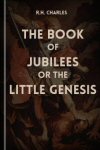
The Book of Jubilees—also known as The Little Genesis—was translated from four Ethiopic manuscripts. It contains a fascinating variety of material not found in the Bible, including details concerning the Fall, Cain and Abel, angels, the Flood, the Tower of Babel, Jacob’s visions, the Messianic Kingdom, and many other subjects. R.H. Charles’ commentary diverges from the traditional belief that Jubilees was written during the first-century, and instead he asserts that it was written at the same time as the Testaments of the Twelve Patriarchs. This volume is intended for scholars and theological students.

The Testaments of the Twelve Patriarchs is a pseudepigraphal work describing the last words of each of the twelve patriarchs. R.H. Charles’ verse-by-verse commentary draws from manuscripts and fragments in Greek, Armenian, Slavonic, Aramaic, and Hebrew.
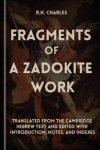
Fragments of a Zadokite Work—also known as The Damascus Document—was translated from the Cambridge Hebrew text. This volume offers insight into the text and into a vast knowledge of Talmudic literature. R.H. Charles provides a brief description and history of the Sons of Zadok in addition to his commentary.

The New Century Bible: The Book of Daniel provides the Revised Version of the book of Daniel along with R.H. Charles’ expository notes.
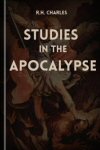
The Studies in the Apocalypse contains four lectures that R.H. Charles initially gave at the University of London and then expanded for this volume. Charles discusses the interpretation of the Apocalypse, the Hebraic style of the Apocalypse, and Revelation 7–9. He argues that much of the Apocalypse must remain a sealed book.
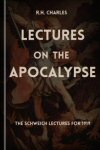
In the Lectures on the Apocalypse, The Schweich Lectures for 1919, R.H. Charles provides three lectures he delivered at the British Academy. Charles first discusses the different methods of interpretation in the early churches about the Apocalypse. In the second lecture, Charles examines the authorship of Revelation 20–22. The third lecture analyzes the critical questions connected with manuscripts and versions of the book of Revelation.
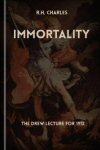
R.H. Charles’ Immortality, delivered as the Drew Lecture for 1912 examines the rise and development of the belief in a future life in Judaism and Christianity.
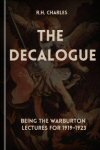
This volume is a series of lectures about the Decalogue given by R.H. Charles as Warburton Lecturer at the Lincoln’s Inn and at the Westminster Abbey. Charles treats the subject of the Decalogue from three standpoints: critical, historical, and practical.
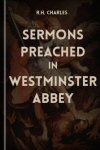
The Sermons Preached in Westminster Abbey contains 18 sermons from R.H. Charles. These sermons were not designed to expound theology, even though they presuppose one. The object of these sermons is mainly practical.
About R.H. Charles
Robert Henry Charles (1855–1931) was a biblical scholar and theologian known particularly for English translations of apocryphal and pseudepigraphal works, which have been widely used. He was born in Cookstown, Co. Tyrone, on August 6, 1855, and educated at the Belfast Academy, Queen’s College, Belfast and Trinity College, Dublin, with periods in Germany and Switzerland. He gained a DD and became professor of Biblical Greek at Trinity College. He also became archdeacon of Westminster in 1919, serving until his death in 1931. He is also the author of The Teaching of the New Testament on Divorce, The Apocrypha and Pseudepigrapha of the Old Testament in English, and A Critical and Exegetical Commentary on the Revelation of St. John, vols. 1 and 2.
Reviews
3 ratings

SEONGJAE YEO
10/5/2019

Will Scholten
8/19/2018
All I can say is WOW!! I only had about 15-20 minutes to check it out, "The Ascension of Isaiah", The foot notes are awesome, really go along in how I have been challenging people! Thank you!!!
Rev. Dr. Mark D. Isaacs
4/10/2017
R.H. Charles did great work. I have worked with his Revelation commentary. Heavy-duty scholarship!David
2/4/2016
I would be so excited to see this go live. There is just something so mysterious about these texts. They create a window into the time they were written and tell us so much of the popular theology, the hopes and fears of the people at that time. It's also interesting to see how many of these texts were at one time or another considered Canonical or close to Canonical by various bodies of believers, both Jews and Christians.